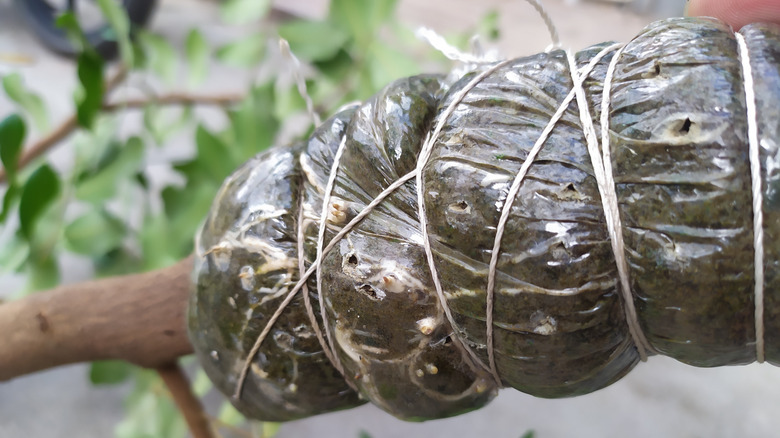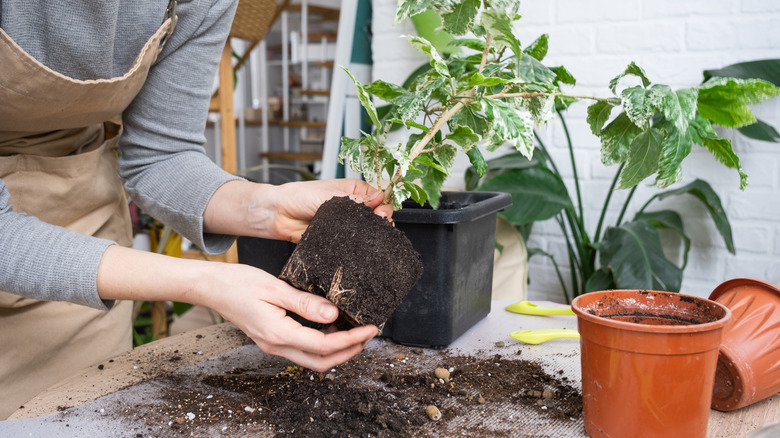What It Means When A Bag Of Dirt Is Tied To Tree Branches
People put all sorts of odd things in trees, particularly around the holidays, including twinkle lights and spring decorations. But if you've seen a bag of dirt tied to a tree branch, it may have you scratching your head, wondering about its purpose. What you're seeing is a popular method of propagating plants like a pro that dates back thousands of years. It's called marcotting or air-layering. When you want an exact copy — or clone — of your favorite tree, such as a prolific fig tree with divine fruit, marcotting is the technique to try.
You root a cutting directly on the tree using a plastic bag full of dirt as the growing medium. The cutting grows as part of the original tree until it's strong and healthy enough to survive on its own. Although it may seem like an obscure method of propagation, it's often easier and more effective than other transplanting techniques since you don't have to deal with temperamental seedlings or cuttings that don't want to root.
How to propagate plants with marcotting
For the best results, choose a straight, healthy branch at least the diameter of a pencil. Pull off any leaves or shoots in the area you'll be cutting. Starting at a point just below a leaf node, make a shallow cut around the branch. Make another one about 1½ inches below the first. Strip away the bark and top tissue layer in this section. You can apply rooting hormone at this point, but it's not imperative for every species.
The bag of dirt is actually sphagnum moss. Dampen the moss and wrap it around the area you cut away. Cover the moss tightly with plastic wrap, and tie it at each end with zip ties or twine to secure it. If the moss will be exposed to direct sunlight or high temperatures, wrap aluminum foil around the plastic to keep the setup damp. Check inside the bag once a week and water the moss as needed. If the moss dries out, roots may not form. You should see roots in the moss within a couple of weeks to a few months, after which time your clone is ready for transplanting.
Cut the rooting branch off below the moss. Discard the plastic wrap and aluminum foil, and plant the cutting in a container with potting soil. Check to be sure you're using the right kind of soil. The real difference between potting soil and garden soil is that the former is designed to support the needs of new transplants. Keep the soil moist but not wet and avoid harsh, direct sunlight until the plant has a thriving root system.

